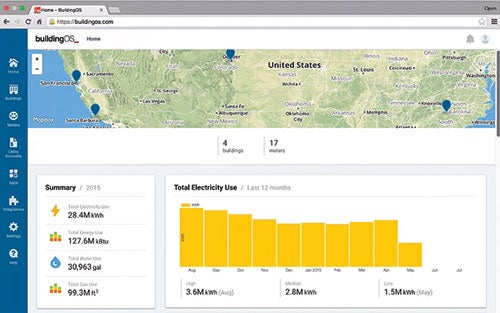ASHE's Energy to Care platform on the rise

Energy to Care’s easy-to-read dashboard also is designed to save time.
A couple of years ago, the American Society for Healthcare Engineering (ASHE) decided to rebrand and expand its energy benchmarking and awards platform, which integrates into the Environmental Protection Agency’s (EPA’s) Energy Star Portfolio Manager tool. The enhanced program, Energy to Care, provides the ability to better visualize and share energy data and performance metrics across a medical facility or health system.
Since these program changes were implemented, the participation rate has climbed from 250 to 1,600 hospitals, says Scott Wallace, LEED AP, CEM, who manages Energy to Care on behalf of San Francisco-based Mazzetti. These participants range from small rural hospitals to the largest nonprofit health systems, he notes.
Also in this article |
| Improving energy efficiency in hospitals |
| Green health systems embrace renewable energy |
|
|
“Portfolio Manager provides the tools to benchmark and weather-normalize your energy data,” says Wallace, explaining the difference between the EPA and ASHE programs. “What we wanted to do with Energy to Care is provide visualization of that data to engage your facility engineers, your nursing staff, your physicians, your patients and your C-suite. Energy to Care is a communication platform that makes it easier to spot trends, compare yourself with others, and reduce your energy consumption.”
Energy to Care’s easy-to-read dashboard also is designed to save time — to make the benchmarking process more appealing to busy health facilities managers and engineers who often are reluctant to take on and “babysit” new programs, Wallace emphasizes.
In addition, the platform facilitates energy-conservation competitions among hospitals in a health system or region. It states on the program’s website that “Friendly competition has been shown to boost energy savings in facilities.” Visit www.EnergytoCare.com to learn more about the program.
While the EPA recognizes hospitals as Energy Star-certified only when they reach the top quartile in energy efficiency, ASHE celebrates incremental improvements through Energy to Care.
The Energy to Care Award honors any applying health facility that has reduced its energy consumption per square foot by at least 10 percent in a 12-month period. “Last year, we had 23 winners across the country, and they were all recognized at the ASHE Annual Conference,” Wallace says.
This year, ASHE is introducing the Energy Champion Award, which will be given to a single facility that demonstrates exceptional energy conservation leadership, as well as energy savings.
Rather than a facility director, it’s the health system or hospital CEO who receives the Energy to Care Award plaque, Wallace points out. ASHE made this strategic decision to get health care CEOs more excited about energy conservation.
“We’re tying together the C-suite and the guys in the trenches [who are] making it happen,” Wallace says. “They often don’t talk to each other or speak the same language. We’re helping to carve out a common language between these two groups.”




